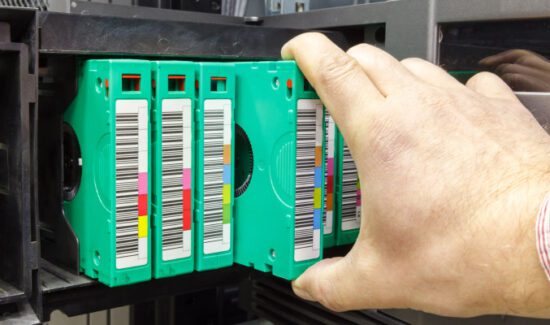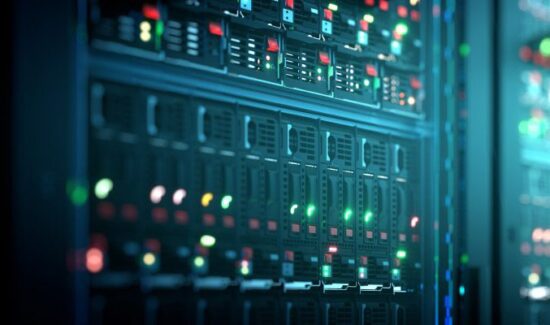What the AI Impact on Data Storage Jobs Looks Like Right Now


Executive Editor Tim King highlights the overarching AI impact on data storage jobs, to help keep you on-trend during this AI moment.
In 2025, it’s increasingly clear that artificial intelligence (AI) is revolutionizing the data storage landscape—and not just in terms of the technology itself, but in how storage professionals do their jobs. As AI becomes deeply embedded in storage systems, operations that once relied on manual provisioning, tiering decisions, and performance tuning are now handled by intelligent software and self-optimizing hardware. While this brings undeniable gains in efficiency and scale, it’s also fundamentally reshaping the roles, responsibilities, and required skill sets of those who work in data storage.
To help you understand the shifting terrain, the Solutions Review editors have broken down the core ways AI is disrupting storage job functions, what storage pros must do to stay relevant, and how the future of this discipline is being redefined by automation, abstraction, and acceleration.
Note: These insights were informed through web research using advanced scraping techniques and generative AI tools. Solutions Review editors use a unique multi-prompt approach to extract targeted knowledge and optimize content for relevance and utility.
AI Impact on Data Storage Jobs: How Has AI Changed the Data Storage Workforce?
AI is making enterprise storage smarter and more self-sufficient than ever. Modern storage systems now leverage machine learning to predict capacity needs, detect anomalies, auto-tier data, and proactively remediate performance issues. As storage becomes increasingly software-defined and cloud-integrated, traditional tasks such as LUN creation, RAID configuration, and manual performance tuning are rapidly vanishing. But this isn’t just about efficiency gains—it’s about a new operational model that requires fewer hands-on tasks and more strategic oversight.
Intelligent Tiering and Storage Optimization
AI-driven storage systems like those from Pure Storage, NetApp, and Dell use real-time analytics to classify and move data across performance and archival tiers with zero manual input. These systems analyze usage patterns, predict hot and cold data trends, and automatically rebalance workloads to optimize performance and cost.
For storage admins, this means less time spent managing volumes and deciding what data lives where. The shift is clear: your value is no longer in making those decisions—but in setting the policies, defining the business logic, and ensuring that AI-driven automation aligns with compliance and organizational goals.
Predictive Failure Detection and Self-Healing
AI has dramatically improved the way hardware health and data durability are managed. Storage platforms now use telemetry and anomaly detection to identify impending drive failures, degraded IOPS, or latent bit errors—often remediating issues before they impact availability. Some systems even initiate preemptive migration or repair workflows automatically.
This is reducing the need for reactive firefighting, overnight support rotations, and routine hardware inspections. Storage pros are moving from being first responders to becoming strategic monitors—reviewing alerts, tuning models, and refining detection thresholds. The “break/fix” days are fading. Instead, expect to be more involved in auditing AI behavior and training systems to get better over time.
AI-Driven Data Lifecycle Management
Managing data lifecycles—archiving, retention, and deletion—has long been a compliance headache. AI is now stepping in to automate retention enforcement, monitor data access frequency, and suggest or initiate archival based on access patterns and legal requirements.
Storage roles tied to compliance are being reimagined. Instead of managing tape libraries or enforcing policies manually, professionals are being asked to oversee AI models that classify data types, flag anomalies, and manage end-of-life procedures. Fluency in data governance frameworks and storage-centric AI tools is quickly becoming table stakes.
Software-Defined and Cloud-Native Storage
With the rise of software-defined storage (SDS) and storage-as-a-service (STaaS), more organizations are abstracting away the hardware layer altogether. AI further accelerates this shift, enabling autonomous provisioning, intelligent data placement, and cloud tiering across hybrid environments.
Traditional storage admins who built careers managing SANs, NAS boxes, and physical arrays are feeling the pinch. The roles of tomorrow require comfort with APIs, orchestration tools, and hybrid cloud consoles. Expect to spend more time working with Infrastructure as Code (IaC), Kubernetes operators, and AI-tuned capacity planning tools than racking disks.
A 2024 ESG Research report found that 57% of enterprises using AI-augmented storage systems cut manual provisioning tasks by more than half, and 49% reduced unplanned downtime linked to storage failures. At the same time, 63% said they were struggling to find or train staff who could manage AI-assisted storage systems effectively.
The Rise of AI-Driven Storage Roles
As in other areas of data infrastructure, AI isn’t just eliminating tasks—it’s giving rise to new job categories. We’re seeing roles emerge such as “Autonomous Storage Engineer,” “Storage Observability Analyst,” and “Data Placement Strategist.” These professionals sit at the intersection of storage, automation, and business continuity—ensuring the systems making decisions can be trusted, optimized, and governed.
Another growing field is that of FinOps-aligned storage planners: professionals who combine AI-powered cost forecasting tools with deep knowledge of storage architecture to ensure optimal usage across hybrid environments. As AI continues to drive real-time optimization, human oversight becomes more about accountability, governance, and systemic thinking.
But be aware: even these roles may evolve quickly as AI platforms get better at generalizing storage patterns across environments. The professionals who will endure are those who can pivot from command-line mastery to business-centric problem-solving—those who understand how data supports real-world outcomes.
Upskilling for the AI-Storage Future
Storage professionals looking to stay ahead must rethink their value proposition. The era of managing hardware arrays and manually tuning performance is giving way to an era of policy-driven, intent-based operations. To thrive in this new model, invest in:
AI and analytics literacy: Learn how AI is applied to performance optimization, fault prediction, and tiering. Understand the algorithms behind your storage system’s behavior.
Storage orchestration and APIs: Get comfortable with RESTful APIs, orchestration platforms, and scripting tools that define the modern storage environment—especially in hybrid or multicloud setups.
Cloud-native architecture: Master storage in containerized and serverless ecosystems. Learn how object storage, block storage, and file systems are being reimagined in cloud-first environments.
Cost optimization and FinOps: The line between storage and finance is blurring. Learn how to interpret AI-powered cost forecasts and help your organization optimize spend while maintaining performance.
Compliance and lifecycle governance: Privacy laws and retention policies don’t disappear with automation. Storage professionals who understand governance frameworks and how AI intersects with compliance will remain indispensable.
For enterprise leaders, now is the time to re-skill your storage teams. Encourage cross-training in cloud services, automation tools, and AI platforms. Those who make the leap from maintenance to modernization will help your business not only keep up—but lead.
AI Will Redefine Storage Jobs—But Not Eliminate Them
If there’s a unifying theme to the AI impact on storage careers, it’s this: the physical is being abstracted, and the manual is being automated. But human judgment still matters. AI can tell you what’s happening and what might happen—but only you can decide why it matters and what to prioritize.
The storage pros of tomorrow won’t just manage volumes—they’ll manage velocity, visibility, and value. That means stepping back from the drive bay and stepping into the command center.
Bottom line: AI will auto-tier the data—but it won’t auto-prioritize the mission. To future-proof your data storage career, become a strategist, a translator, and a steward of smart infrastructure. The storage systems may be intelligent—but they still need someone with wisdom.





















